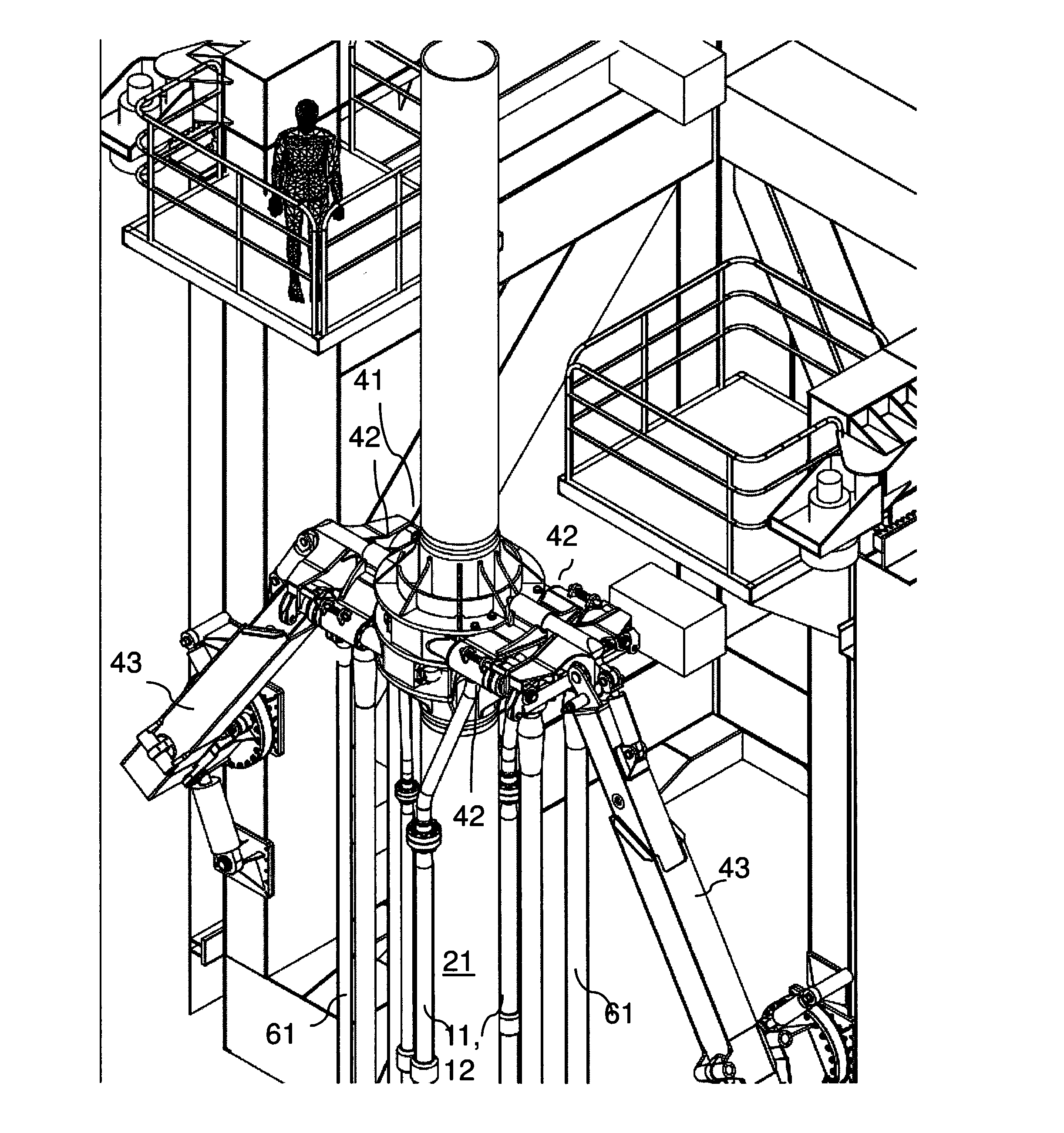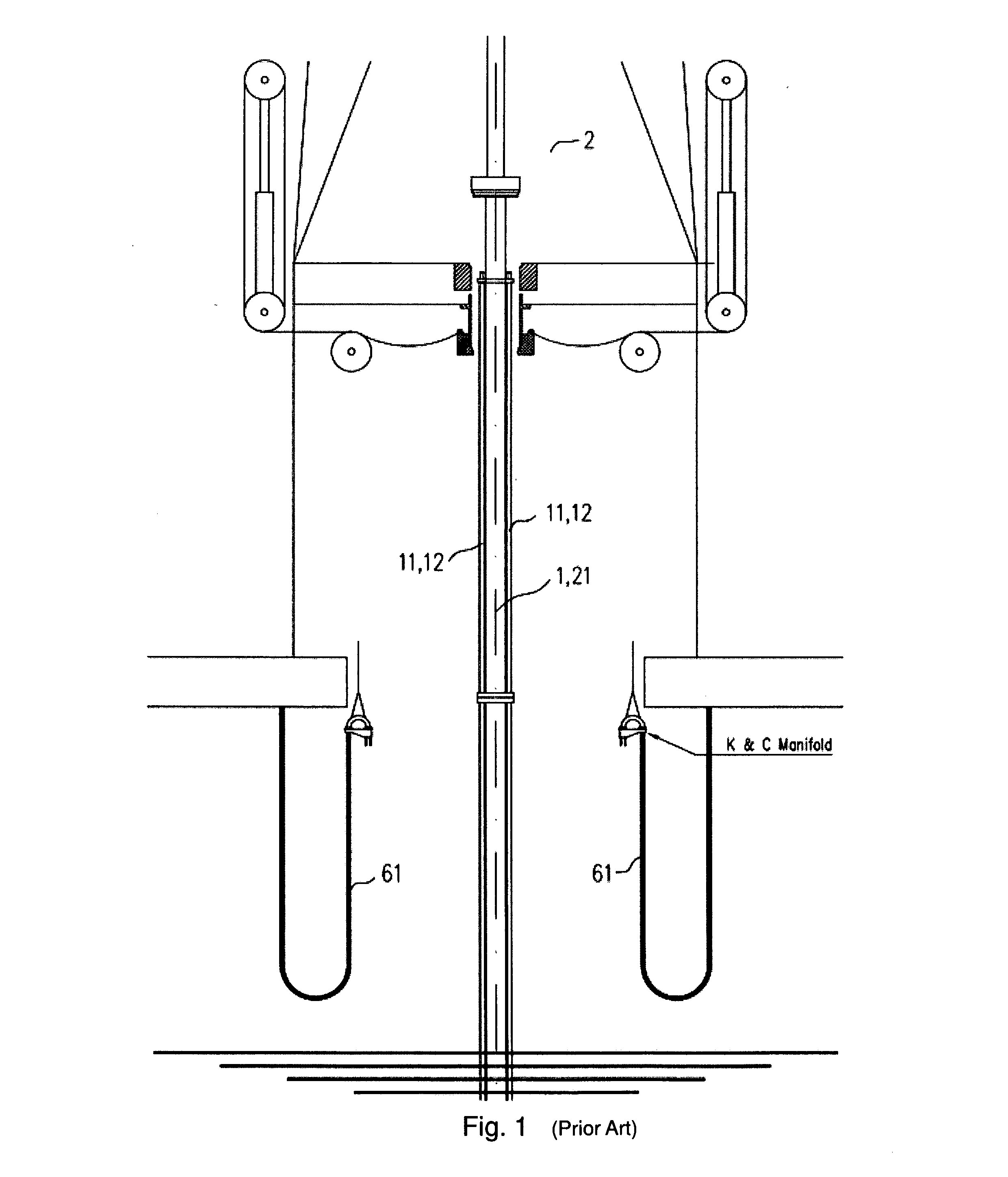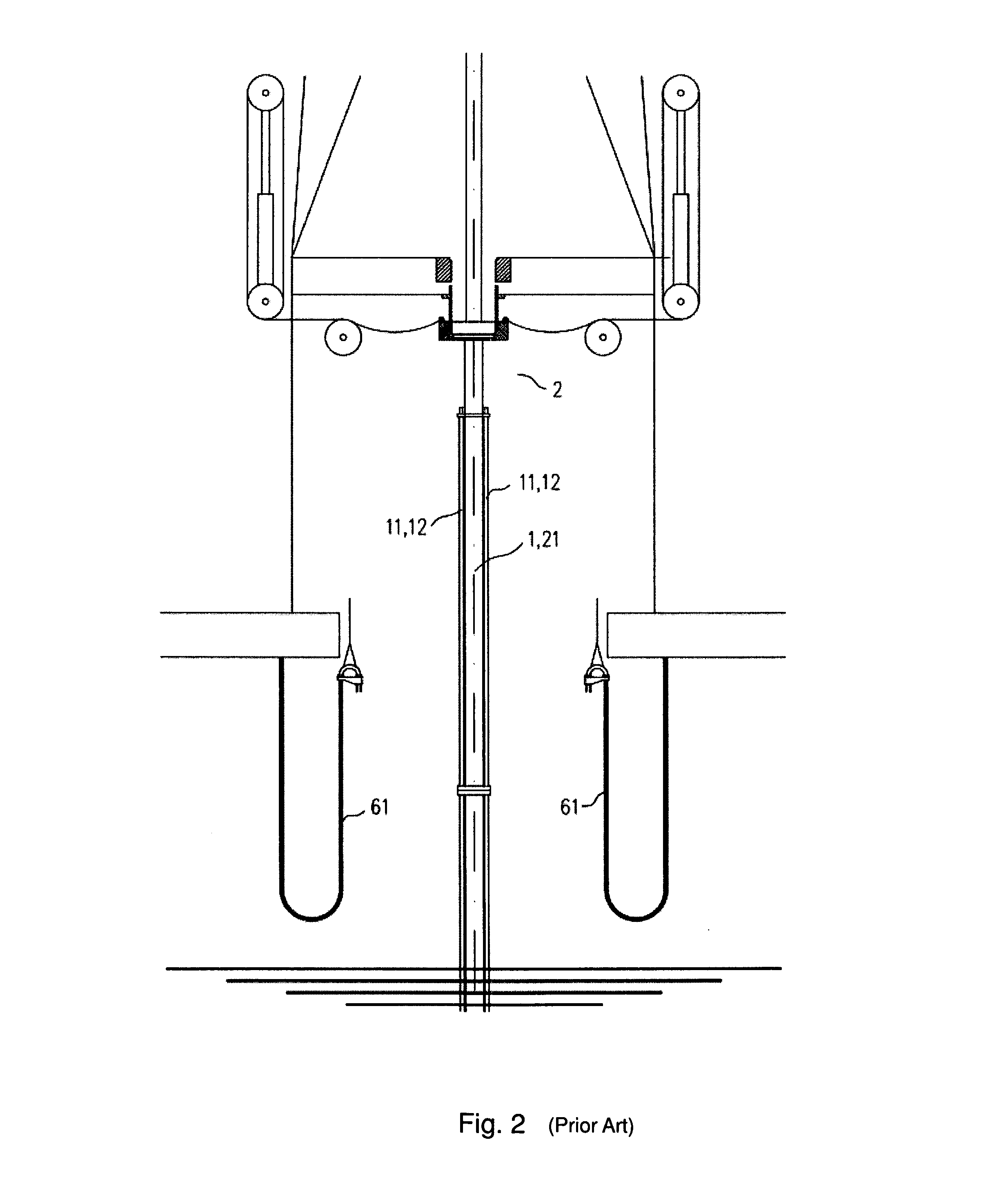[0001]This invention relates to a connecting device for kill- and choke hoses at a riser. More specifically it relates to a remote controlled automatic connecting device for kill- and choke hoses between a riser and their adjacent kill- and choke flexible housings from a kill / choke manifold at a rig. A first
advantage of the invention is that it facilitates the connecting process due to the horizontal operation instead of the vertical operation wherein the risers
pendulum movement otherwise makes the connecting less secure. A second advantage of the invention is that the operator may stand on a place at a distance from the riser and target in and remote-control the connection in a way that one may avoid any operator to hang in riding belts. The operation becomes more secure to the operator and
safer due to the easier targeting of the connecting manifold to the riser's kill / choke manifold, in addition the connection may be conducted faster.
[0003]During marine drilling, for instance during drilling of exploration wells or production wells, it is placed a drilling template or template at the sea-floor, wherein one usually first
drill a pretty shallow 36″ borehole and lines with a 30″ casing, a so-called conductor casing. Both the
drill pipe and the casings are put together by screwing by help of a
top drive drilling motor in a drawwork, for instance hanging in the crown block in an regular drilling derrick or in the spreader at a
hydraulic Ram Rig and getting lowered through the drilling template or the template. So one may get a stable top section of the well for further drilling and one may prevent earth fall into the well and one prevents to go beyond the pressure of the ambient relatively uncompacted or unconsolidated sediments, which have a low fractionating pressure so close to the surface. By this initial drilling a relative thin
slurry which is not returned to the drilling platform at the sea surface is used. Further it is drilled with a 26″ bit through the conductor casing and thereafter it's used a casing of 20″ mainly in the whole length of the drilled hole, the conductor casing included. This improves the stability of the bore hole wall against fractioning to deeper brehole depths, at the same time as one improves the hole to manage higher pressure from the return
sludge when a riser arrives later on. Neither when drilling with 26″ bit it is used a heavy drilling mud, but a relative thin
slurry. The
drill string comprise a bit inclusive a so called “
bottom hole assembly” BHA in the bottom end of multiple drill pipes which are screwed together. BHA comprises a drill collar and a possible drilling
instrumentation. The drill pipes have a narrower
diameter than the bit. It is the drill collar that provides the essential weight of the bit against the bottom of the hole during drilling. The weight of the bore hole is being compensated by the crown block so that the
drill string is upheld and prevents that it buckles in the well.The Riser
[0004]When the 20″ casing is inserted into the well there is a
blow out valve BOP and a riser (1) at the top of this to be installed via a
ball joint at the BOP. Kill- and choke-hoses passing the
ball joint may be coiled up some few turns to stand the torsion movements up to about 4 degrees in the
ball joint. The
blow out valve is installed at the well head which is comprised of the top-part of the installed casing pipes in the template, the one inside the previous, usually 30″ and 20″ casings. The
blow out valve BOP is skidded in at a sledge (59) in the moonpool at a cellar
deck (58) under the rig floor (55) and thereafter is mounted, one by one, riser sections (13) by use of their lower
flange connector (132) in the top of every hanging riser line (1) hanging in slips (56) in the rig floor (55). The connected riser line (1) may then be lowered further by using the crown block or the spreader in the drilling derrick, and be lowered, section by section, until a desired depth is reached, as the BOP reaches the well head. This process terminates by installing a so-called slip joint (2) on top of the upper so-called landing string (60). This has to take place outside the template to prevent a catastrophe if one should lose and drop the riser string at the template. Then the BOP and the riser is swung in over the template and the BOP is lowered down to the well head when the BOP is in the correct position on top of this, and is locked by, special purpose hydraulic mechanisms.
[0005]
Slip joint (2) comprises a so-called outer barrel (21) which is the lower, static part which follows all the underlying riser sections vertical movements and which in its operative condition is in a locked position relative to the
seabed and the well. The slip joint outer barrel (21) envelopes a vertical plain sliding inner barrel (22) which in its operative position should be hung up fixed in the vessel and follow the vertical movements of the vessel, as distinct from the riser (1) and the slip joint outer barrel (21) which thus may be heave compensated.
[0006]The role of the riser (1) is twofold. The riser shall guide the next
drill string with a 18⅜″ bit from the rig floor down through the complete riser length, further down through the BOP and the existing 30″ and 20″ casing pipes and drill further down under the 20″ casing pipes' lower end. During this operation it is used a heavier drill mud which is pumped from a drill
mud pump system at the rig floor, down through the
drill string and out through the bit. The drilling mud washes the bit and the bottom of the hole clean from rock type fragments, and due to the density and the viscous properties of the drill mud, the drill mud brings the rock type fragments back up through the annular space both in the naked bore hole, the cased part with the 20″ casing and out through the well head, BOP and up through the riser, along the outside of the drillstring.
 Login to View More
Login to View More  Login to View More
Login to View More 


